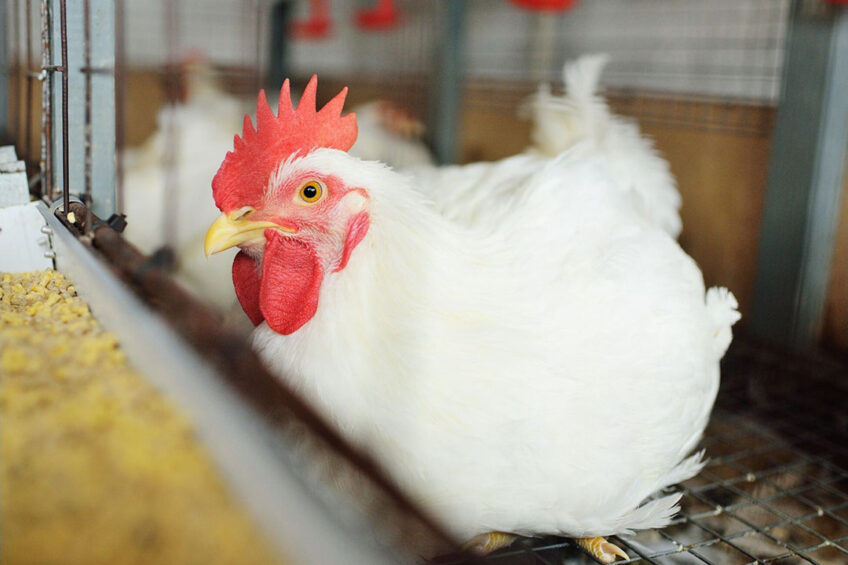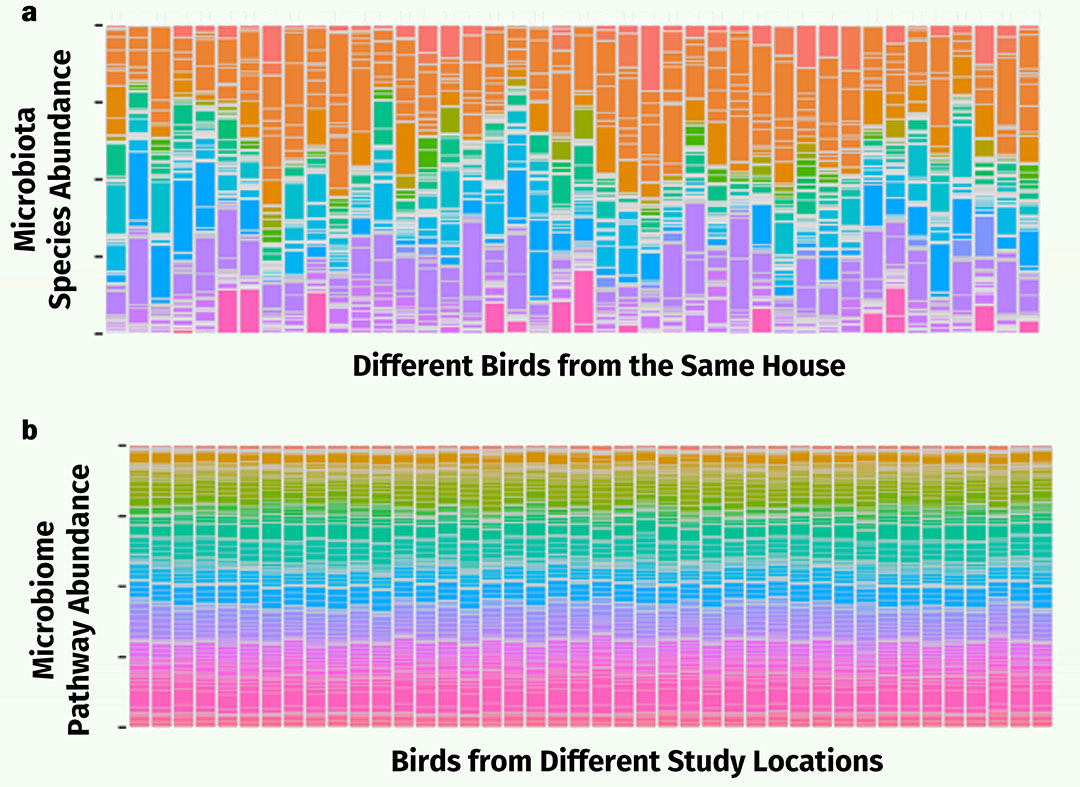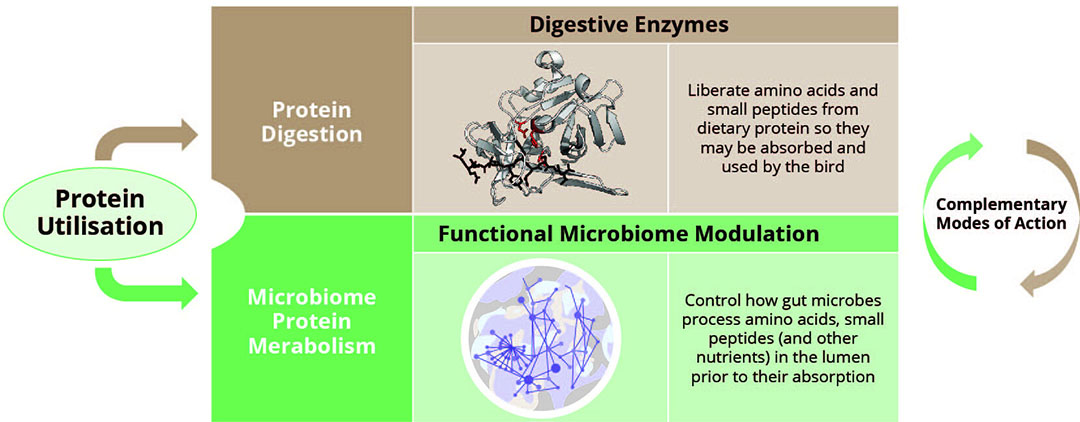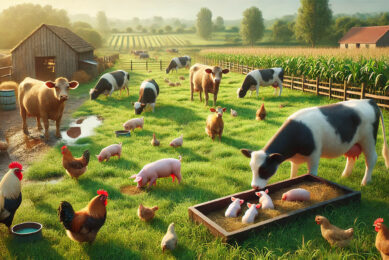Rethink the microbiome to overcome poultry challenges

The microbiome is vital for poultry flock health, nutrition and welfare. Challenges previously masked by AGP usage are resurfacing, possibly caused by poor microbial metabolism which impacts production. By approaching the microbiome as an organ, microbial metabolic pathways can be optimised.
Part of the Gut Health 2022 Special
The importance of the microbiome and its role in bird nutrition, health and sustainability is well established, but our understanding of the interactions between the microbiome and the host animal continue to unfold. In the past, the microbiome was considered as a collection of microbes, each playing their separate part in the bigger gut function picture. Through advances and innovations in the field of metagenomics, we can now understand the function of these pieces and how they affect or benefit the host and its environment.
Why the microbiome is so important
Bacteria in the gut aids to breakdown the components of the diet into metabolites which are then absorbed and used by the host or excreted into the environment. Thus, the microbiome has an impact internally, affecting the host biology, but also externally impacting the surrounding environment. There are as many microbial cells throughout the gastrointestinal tract as there are poultry cells in the bird. Like its host, the microbiome exhibits its own metabolism, making use of available nutrients including amino acids and short peptides. How the microbiome metabolises protein influences host health, performance, welfare and sustainability via microbial metabolites.
Figure 1 – (a) Gut microbial species abundance shows dramatic variability, (b) Microbiome pathway abundance is largely consistent.

New technologies and capabilities
Research capabilities continue to develop, and our ability to uncover new approaches to common problems evolves. For example, we know that there is a great deal of variability in the composition of the microbiome between different birds (Figure 1a), even when birds are raised on the same diet and kept in the same house. We have advanced to the point where we can now identify and quantify microbiome metabolism pathway abundance, showing the activity of the microbiome. As the results show in Figure 1b, even when birds are taken from different study locations, the microbial metabolism is largely consistent, regardless of the composition of the microbiome. These results teach us that both microbial composition and microbiome metabolic pathways can be modulated, considering the gut microbiota collectively as an organ. With this approach, we can optimise the output of the microbiome using precision modulators.
Microbial protein metabolism
When formulating rations, nutritionists assess the dietary requirements of the host animal and supply nutrients in adequate quantities and forms. But one often overlooked aspect is microbial metabolism that also takes place in the gut. Considering the microbial metabolism of protein as an example, microbial metabolites can be used in various ways:
Absorption by the bird to support growth, metabolism, and immunity
Interactions with the epithelial layer to affect barrier integrity and leakage
Modification of the luminal environment to promote or suppress pathogens
Excretion to affect the litter and emissions profile
Figure 2 – Microbial protein metabolism is a fundamental but often overlooked aspect of host protein utilisation.

Modulating metabolic function
Some microbiome protein metabolism pathways are beneficial to the animal (Figure 2); they produce branched and short-chain fatty acids, polyamines and other amino acids which can all be used to improve performance, boost immune function, and control inflammation.
But some microbiome protein metabolism pathways are undesirable. They produce ionised forms of ammonia, hydrogen sulphide radicals, uric acid, and urates among others. These increase the luminal pH, encourage pathogens originating from feed, cause epithelial damage, reduce energy metabolism, reduce performance, and cause undesirable litter and odour emissions. If we can modulate microbial protein metabolism to be predominantly beneficial, this offers a new strategy for delivering value in the poultry industry. Promoting the beneficial microbiome protein metabolism pathways, and minimising the undesirable pathways is the key to unlocking higher levels of profitability, welfare and sustainability in the flock. For example, when protein in the hindgut is repacked into beneficial metabolites and reduces the amount of undesirable metabolites like ammonia, this limits the opportunity for pathogen growth improving the bird’s resilience to enteric stress. Similarly, when the production of ammonia and hydrogen sulphide radicals is reduced, this improves litter quality which reduces the incidence of contact dermatitis.
Improving microbial protein metabolism
The microbiome has a profound impact on nutrition, health and sustainability. Recent innovations show that the microbiome can be considered collectively as an organ. This approach allows us to modulate the output of the microbiome, encouraging the beneficial pathways which can support flock profitability and sustainability.
References are available on request.
Join 13,000+ subscribers
Subscribe to our newsletter to stay updated about all the need-to-know content in the dairy sector, two times a week.






